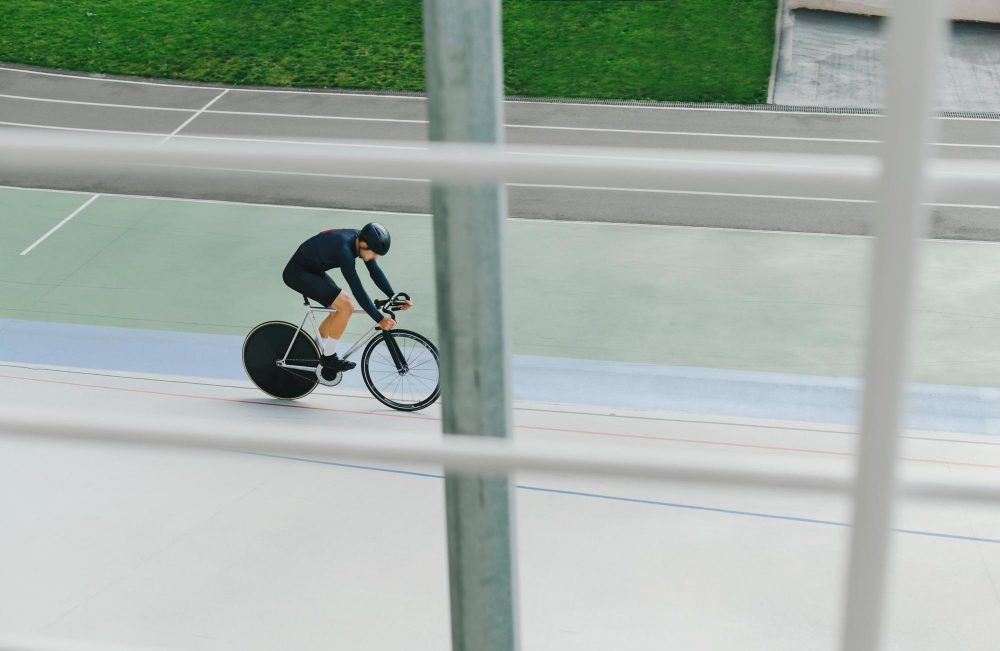How many rest days do pro cyclists take?
Rest is an essential component of any athlete’s training regimen, and professional cyclists are no exception. However, the amount of rest days pro cyclists take can vary depending on factors such as their training program, race schedule, and individual recovery needs. In this article, we will explore the importance of rest for pro cyclists and delve into how many rest days they typically incorporate into their training.
The importance of rest in cycling
Rest days are crucial for pro cyclists to allow their bodies to recover and adapt to the physical stresses of training and racing. Cycling is a demanding sport that places significant strain on the muscles, joints, and cardiovascular system. Without proper rest, athletes risk overtraining, which can lead to fatigue, decreased performance, and increased risk of injury.
“Rest days are just as important as training days. They allow your body time to repair and rebuild, which ultimately leads to improved performance.”
– Pro cyclist, Team GB
In addition to physical recovery, rest days also play a vital role in mental rejuvenation. Continuous intense training and racing can put a strain on an athlete’s mental well-being, causing burnout and decreased motivation. Rest days provide pro cyclists with an opportunity to relax, recharge, and maintain a healthy work-life balance.
Factors influencing rest days for pro cyclists
The number of rest days pro cyclists incorporate into their training largely depends on several factors:
- Training load: The intensity, duration, and frequency of training sessions play a significant role in determining the need for rest. Harder training blocks may require more frequent rest days.
- Race schedule: Pro cyclists have to carefully plan their rest days around their race calendar to ensure they are adequately recovered for key competitions.
- Individual recovery needs: Each cyclist’s body responds differently to training stimuli, and some may require more rest days than others to optimize recovery.
Typical rest day practices
While the exact number of rest days can vary, pro cyclists typically incorporate one or two full rest days into their weekly training schedule. On these rest days, they avoid any intense physical activity and focus on gentle recovery work such as stretching, foam rolling, and low-intensity cross-training like swimming or yoga.
It’s important to note that rest days don’t mean complete inactivity. Pro cyclists still engage in light activities to promote circulation, flexibility, and recovery. Additionally, some cyclists may opt for active recovery rides, which involve easy spins on the bike at a low intensity to aid recovery without adding significant stress to the body.
Example rest day schedule:
| Day | Activity |
|---|---|
| Monday | Intense training session |
| Tuesday | Active recovery ride |
| Wednesday | Rest day |
| Thursday | Hard training session |
| Friday | Active recovery ride |
| Saturday | Rest day |
| Sunday | Long endurance ride |
It’s important to remember that the number of rest days and the structure of a pro cyclist’s training schedule will vary based on individual needs and goals. Some cyclists may require more frequent rest days, while others with higher training tolerances may have fewer.
Final thoughts
Rest days are an integral part of a pro cyclist’s training routine. They allow for physical recovery, mental rejuvenation, and ultimately contribute to improved performance. While the exact number of rest days can vary, pro cyclists typically include one or two full rest days per week. Additionally, they engage in light recovery work and may opt for active recovery rides. It’s essential for each cyclist to listen to their body and adjust their rest days accordingly to optimize their training and overall well-being.
How Do Pro Cyclists Recover So Fast?
Professional cyclists push their bodies to the limit, enduring grueling races and intense training sessions. One of the secrets to their success lies in their ability to recover quickly. So, how do these athletes bounce back so fast? Let’s uncover some of the key strategies used by pro cyclists to optimize their recovery.
Proper Nutrition
Eating a well-balanced diet is crucial for pro cyclists to replenish their energy stores and repair muscle damage. They focus on consuming a mix of carbohydrates, proteins, and healthy fats to promote recovery. High-quality sources such as lean meats, fish, fruits, vegetables, and whole grains provide the necessary nutrients.
Rest and Sleep
Rest and sleep are essential for recovery. Pro cyclists prioritize getting enough sleep to enhance muscle repair and regeneration. They also incorporate rest days into their training schedule, allowing their bodies to recover from the physical demands of cycling.
Active Recovery
Pro cyclists engage in active recovery, which involves light exercise or low-intensity cycling after intense workouts or races. This helps to flush out metabolic waste products, increase blood flow, and promote muscle recovery. Activities like gentle spinning or yoga can aid in reducing muscle soreness and stiffness.
Compression Garments
Compression garments, such as compression socks or tights, are often worn by pro cyclists to improve circulation and reduce muscle fatigue. These garments provide a gentle squeezing effect that helps to prevent swelling and promote faster recovery.
Physiotherapy and Massage
Professional cyclists regularly undergo physiotherapy and massages to alleviate muscle tension, improve flexibility, and speed up recovery. These therapies help to promote blood flow, release muscle knots, and reduce inflammation, allowing cyclists to bounce back faster.
“Recovery is just as important as training. You have to take care of your body if you want to perform at your best.” – Chris Froome, British professional cyclist
If you’re wondering how pro cyclists recover so fast, these strategies provide a glimpse into their secret toolbox. With a combination of proper nutrition, ample rest, active recovery, compression garments, and therapeutic treatments, these athletes optimize their recovery process and achieve peak performance.
Does cycling slow aging?
Cycling is not only a popular hobby and means of transportation, but it also has numerous health benefits. One of the most intriguing aspects is its potential to slow down the aging process. Research suggests that regular cycling may have a positive impact on both physical and mental aspects of aging.
The physical benefits of cycling
Cycling is a low-impact exercise that offers an effective cardiovascular workout. It can improve heart health, boost metabolism, and help maintain a healthy weight. Studies have shown that cycling regularly can increase muscle strength and flexibility, reduce the risk of chronic illnesses such as heart disease, diabetes, and certain types of cancer, as well as strengthen bones.
According to a study published in the Journal of Aging and Physical Activity, cycling can help combat age-related muscle loss, known as sarcopenia. The study found that older adults who engaged in regular cycling had greater muscle mass and strength compared to sedentary individuals.
The mental benefits of cycling
In addition to improving physical health, cycling also has positive effects on mental well-being, which is an essential aspect of healthy aging. Regular exercise, such as cycling, has been linked to improved mood, reduced stress, and enhanced cognitive function.
A recent study conducted by the University of Illinois found that cycling regularly can improve brain health in older adults. The researchers discovered that cycling increased blood flow to the brain, resulting in improved cognition and reduced risk of age-related cognitive decline.
“Cycling is not only good for your physical health but also has significant benefits for brain health and cognitive function. It can help keep your mind sharp as you age.”
Incorporating cycling into your routine
If you’re considering taking up cycling to slow down the aging process, it’s important to start at a pace that suits your current fitness level. Remember to wear appropriate safety gear, such as a helmet and reflective clothing, and obey traffic rules.
Here are a few tips to help you get started:
- Invest in a good-quality bicycle that suits your needs and preferences.
- Start with short rides and gradually increase the duration and intensity.
- Find cycling routes or join local cycling groups to make the activity more enjoyable.
- Combine cycling with other exercises, such as strength training and stretching, to maintain overall fitness.
Remember to consult with your healthcare provider before starting any new exercise program, especially if you have any pre-existing medical conditions.
In conclusion, regular cycling can offer a multitude of physical and mental benefits that contribute to healthy aging. So, hop on your bike and enjoy the ride towards a healthier and more youthful you!
Does Cycling Reduce Cellulite?
Cellulite is a common concern for many individuals, and finding effective ways to reduce its appearance can be a challenge. One popular form of exercise that is often associated with cellulite reduction is cycling. But does cycling really help to combat cellulite? Let’s explore the connection between cycling and cellulite reduction.
Understanding Cellulite
Cellulite occurs when fat deposits push through the connective tissues beneath the skin, resulting in a dimpled or lumpy appearance. It primarily affects women and can be influenced by various factors including genetics, hormonal changes, and lifestyle habits.
The Benefits of Cycling
Cycling is a low-impact cardiovascular exercise that offers numerous benefits for overall health. It is known to improve cardiovascular fitness, increase muscle strength and endurance, and promote weight loss. These benefits make cycling an excellent choice for those looking to tone their bodies and improve their overall fitness levels.
While there is no specific scientific evidence that directly links cycling to cellulite reduction, regular exercise, including cycling, can contribute to an overall reduction in body fat percentage. As a result, this may lead to a decrease in the appearance of cellulite.
Combining Cycling with a Healthy Lifestyle
To optimize cellulite reduction, it is important to combine regular cycling with a healthy lifestyle. This includes maintaining a balanced diet, staying hydrated, and incorporating strength training exercises that target the areas affected by cellulite.
Remember, reducing cellulite involves a holistic approach that focuses on overall body composition rather than solely relying on one exercise or technique.
In addition to cycling, other forms of exercise such as strength training, yoga, and high-intensity interval training (HIIT) can also be beneficial in reducing the appearance of cellulite. Combining different exercises helps target different muscle groups and can lead to improved body composition.
Can too much cycling be bad for you?
Cycling is a popular form of exercise in the UK, but can too much cycling be bad for your health? While cycling offers numerous benefits such as improved cardiovascular fitness, weight management, and stress reduction, excessive cycling without adequate recovery time can lead to potential risks and negative effects on the body.
Overuse injuries
One of the main concerns with excessive cycling is overuse injuries. **Repetitive strain** on the muscles, tendons, and joints can cause conditions such as **tendinitis**, **bursitis**, or **stress fractures**. It is important to gradually increase the intensity and duration of your rides to avoid these injuries, and always listen to your body’s signals of pain or discomfort.
Lowered immune system
Intense and prolonged cycling sessions can put stress on the immune system, making cyclists more susceptible to illnesses and infections. Research has shown that long-duration endurance exercises like cycling can temporarily suppress the immune response, leaving the body vulnerable. **Proper nutrition** and allowing enough time for recovery between rides are crucial for maintaining a strong immune system.
Physical and mental burnout
Engaging in excessive cycling without proper rest days can lead to physical and mental burnout. Overtraining syndrome can manifest as persistent fatigue, decreased performance, mood swings, and sleep disturbances. It is essential to incorporate rest days into your training schedule to allow your body and mind to recover and rejuvenate.
“Balance is key when it comes to cycling. Listening to your body and finding a sustainable routine is crucial for long-term health and enjoyment of the sport.”
While cycling provides numerous health benefits, it is essential to strike a balance and avoid overdoing it. Here are some tips to help you maintain a healthy cycling routine:
- Gradually increase the intensity and duration of your rides.
- Include rest days in your training schedule to allow for adequate recovery.
- Pay attention to your body’s signals and avoid pushing through pain or discomfort.
- Ensure you are consuming a well-rounded and balanced diet to support your physical activity.
- Incorporate cross-training activities to reduce the risk of overuse injuries.
Can cycling cause lower back problems?
As the popularity of cycling continues to grow in the UK, it’s important to be aware of the potential impact it can have on our bodies. One common concern for cyclists is the risk of developing lower back problems. While cycling is generally a low-impact exercise that is beneficial for cardiovascular health and muscle strength, improper cycling technique or bike setup can contribute to lower back pain and discomfort.
Understanding the causes
There are several factors that can contribute to lower back problems while cycling:
- Poor bike fit: A bike that doesn’t properly fit your body can put strain on your lower back.
- Inadequate core strength: Weak muscles in your core can lead to poor posture and increased stress on your lower back.
- Incorrect riding position: Leaning too far forward or arching your back excessively while cycling can strain the lower back.
Prevention and treatment
Fortunately, there are steps you can take to prevent or alleviate lower back problems related to cycling:
- Get a professional bike fit: Visit a reputable bike shop or a professional bike fitter to ensure your bike is adjusted to fit your body correctly.
- Strengthen your core: Incorporate exercises that target your abdominal and back muscles to improve core strength and stability.
- Focus on proper form: Maintain a neutral spine position and engage your core muscles while cycling to reduce strain on your lower back.
Remember, the key to preventing lower back problems while cycling is finding the right balance between comfort and efficiency.
Seek professional advice
If you’re experiencing persistent or severe lower back pain while cycling, it’s essential to seek professional advice from a healthcare provider or a physical therapist. They can provide a thorough assessment, diagnose any underlying issues, and offer specific recommendations or exercises tailored to your needs.
| Common Causes | Prevention | Treatment |
|---|---|---|
| Poor bike fit | Get a professional bike fit | Consult a healthcare provider |
| Inadequate core strength | Strengthen your core | Physical therapy exercises |
| Incorrect riding position | Focus on proper form | Postural correction techniques |
By taking proactive measures to ensure proper bike fit, strengthen your core muscles, and maintain correct riding posture, you can prevent lower back problems and continue enjoying the many benefits of cycling without discomfort.
Conclusion
While cycling alone may not directly reduce cellulite, it can be a valuable component of an overall fitness routine that contributes to cellulite reduction through fat loss and improved body composition. Remember to combine cycling with other forms of exercise and a healthy lifestyle for optimal results. Stay consistent, stay active, and embrace a well-rounded approach to achieve your fitness goals.



